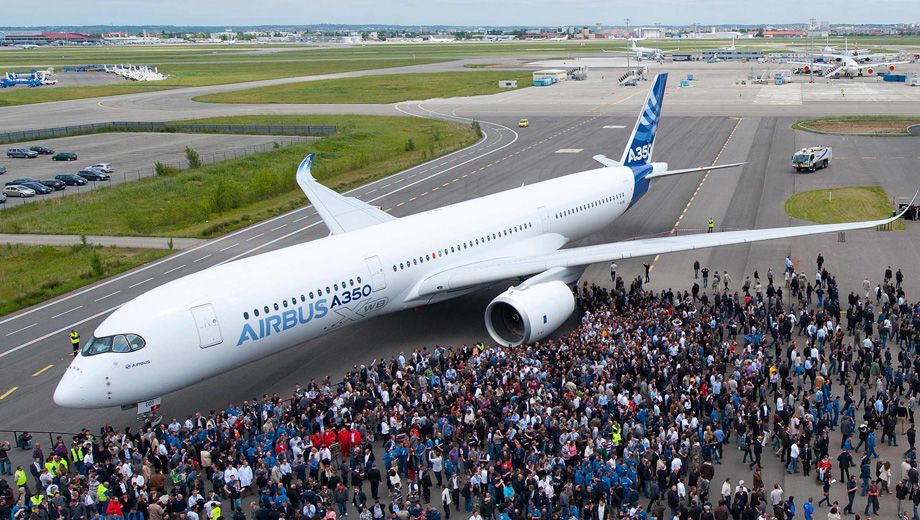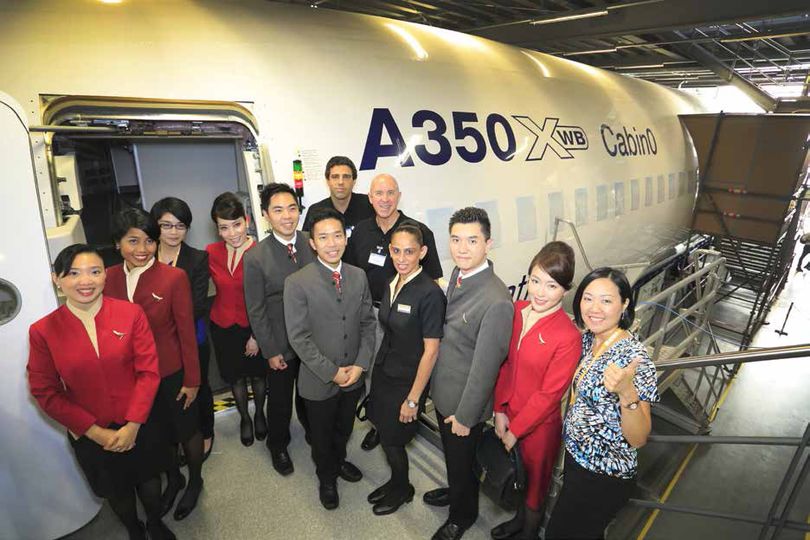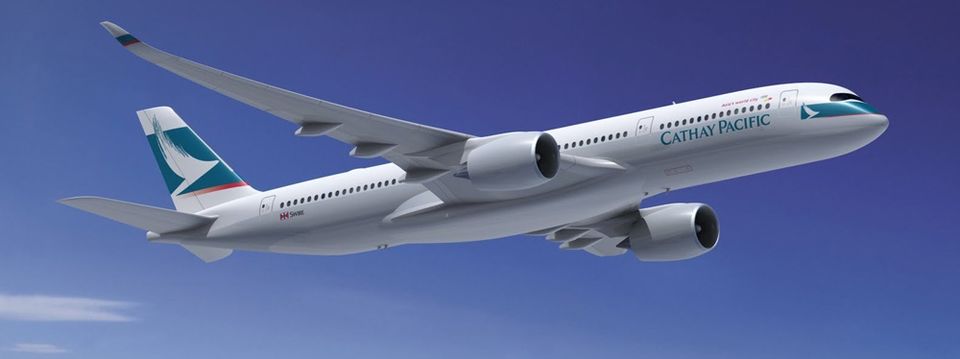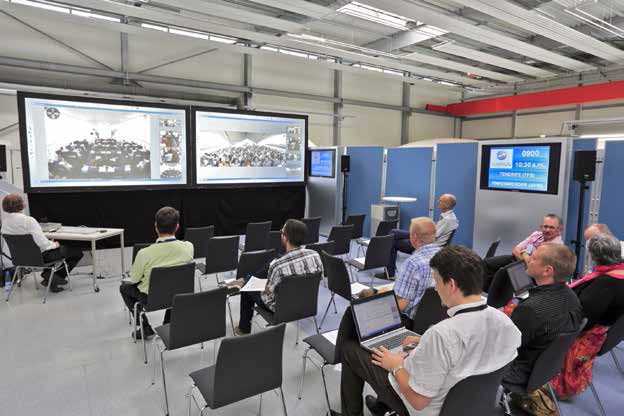The Airbus A350 has made its first ‘virtual passenger flight’, with 129 passengers and a cabin crew supplied by Cathay Pacific taking part in a four hour dry run in an A350 mock-up dubbed ‘Cabin Zero’.
The make-believe flight is another milestone in the road towards the A350’s debut into commercial service in mid-2014, and follows the next-gen jetliner’s first actual flight on June 14th.
Here’s an inside look at this flight of fancy – Flight 0900 from the Canary Islands to Hamburg, Germany…
On July 25, 129 passengers on Flight 0900 received their boarding passes, walked into the cabin, stashed their trolley bags in the overhead lockers and took their seats for what they hoped would be a comfortable and event-free journey.
The flight took off a little later than scheduled – not so unusual in today’s operating environment – but around four hours later the captain announced over the PA that they had made up time and the aircraft had begun its descent.
All perfectly routine, you might think, until you realised that the aircraft never actually left the ground.
In fact the whole 'flight' took place in a full-scale cabin mock-up in the Airbus plant situated on the outskirts of Hamburg.
This was ‘CVFF’ – the cabin virtual first flight and engineering test staged in the A350 XWB Cabin Integration and Test Centre.
It was the latest stage in the development of this revolutionary new aircraft type, running in parallel with the flight test campaign that has seen the A350 perform 15 flights so far.
The big selling point of the A350 XWB is its efficiency, which relates not just to a reduced fuel burn and CO2 emissions but also the cabin design.
Airbus states that “smooth curves, flowing lines, innovative lighting and wide windows” will feature in the cabin, and each of these elements was incorporated into the mock-up, dubbed Cabin Zero.
The dimensions of the cabin were reproduced to the centimetre, although only the forward and aft sections were included. Business and Economy Class seats were installed – albeit without working video screens – and fully operational galleys were fitted.
There was air-conditioning, mood lighting, realistic flight sounds (courtesy of Microsoft Flight Simulator)… everything, in fact, to make it look and feel like a real flight.
Cathay Pacific adds the real to the virtual
And then there were the CX cabin crew.
“We thought this was the right time to put Cabin Zero to the test in a real operational environment with real cabin crew,” says Michel Treillet, Customer Programme Director for the A350 XWB programme.
“Cabin Zero was developed as an engineering platform but we wanted to take it further “and use it as if it were a real aircraft.”
"For that we needed real cabin crew and so we called on Cathay Pacific for help, based on our experience with them in the past and also because CX is a big customer for the A350.”
Nine crew were recruited for the exercise, all of them going through three days of intensive training prior to the day of the trial.
“I wanted to get accurate information to our crew in advance of the exercise because I knew it would be a big challenge for them, working in a brand new environment with new galley arrangements and standards, and with different types of service equipment” explains Cathay Pacific Inflight Technical Operations Manager Inez Mok, who coordinated with the project team to get a full understanding of the whole process.
The three-day briefing course included a thorough introduction to Cabin Zero, followed by familiarisation procedures for cabin checks, the passenger doors, the flight attendant panel and cabin intercommunication data system.
Flight 0900 takes wing
When passengers on Flight 0900 settled into their seats, the crew set about their pre-flight routine as they would for any CX flight.
From a passenger perspective the virtual flight was every bit the real deal, from the announcements to fasten seat belts to settling down for a hearty hot lunch.
All passengers were asked to behave as they would on a normal flight, though some were given special assignments to test various aspects of the inflight equipment.
Airbus engineers sat at work stations in a special section between the Business Class and Economy cabins, monitoring various technical aspects of the virtual flight.
The day didn’t end when the flight came in for its virtual landing. Passengers were asked to sit down and complete detailed questionnaires about their entire experience on the virtual flight.
The cabin crew went through individual debriefings to give Airbus invaluable feedback on the cabin and its workings, from galley equipment to the layout of crew rest areas.
“What the CX crew have given us is valuable input to prepare for the A350’s entry into service,” says Airbus A380 programme director Treillet, adding that first test aircraft to be fitted with a cabin, MSN002, is now being assembled in Toulouse.
“We will gather all the feedback and take a close look at what things need to be changed or modified. It’s always a challenge to match an engineering platform with the final cabin but I think CVFF has been an invaluable intermediate step in terms of the cabin development.”
Reprinted from the August 2013 edition of CX World magazine
Follow Australian Business Traveller on Twitter: we're @AusBT





Hi Guest, join in the discussion on Airbus A350 makes its first 'virtual flight'